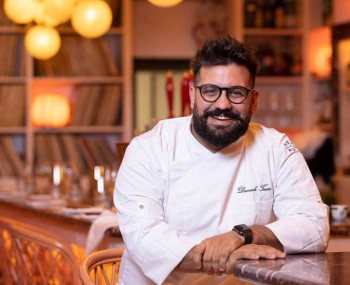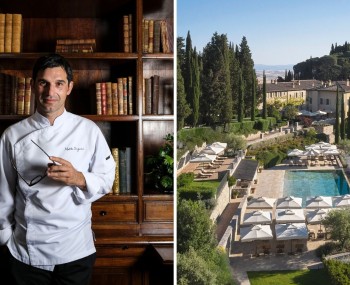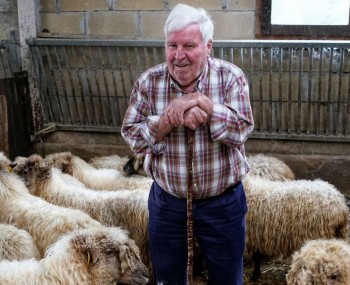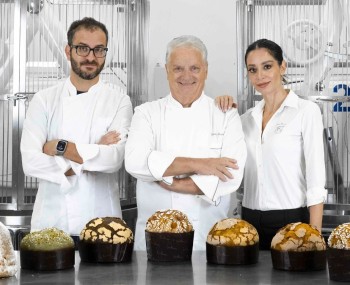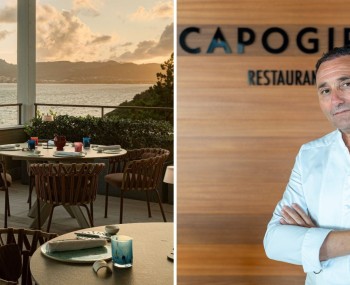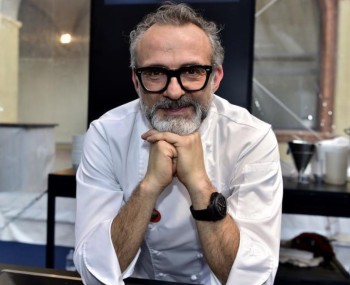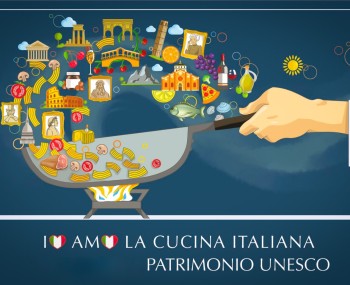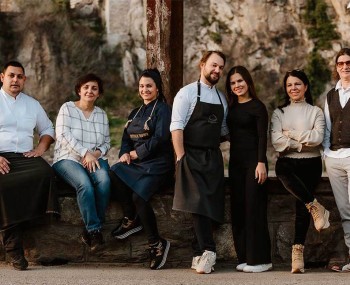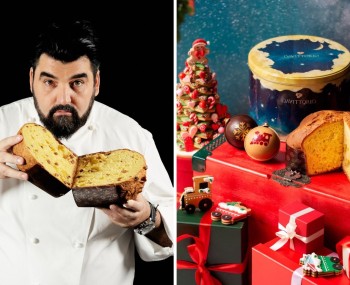The new ally of chefs is not a flesh-and-blood sous-chef, but a chatbot. ChatGPT, the famous language model developed by OpenAI, is the most talked-about tool among restaurant professionals in 2025. No longer just for managing shifts and inventory, but for creating recipes, menus, and even dining room atmospheres. A prime example? The Next restaurant in Chicago, where for four months in 2026, a nine-course menu will be offered, created by imaginary chefs, the result of interaction between artificial intelligence and the visionary mind of Grant Achatz.
Photo of the chef on the cover: Fire Restaurant
Chef Jill, between Escoffier and science fiction
Among the protagonists of the futuristic menu at Next, as announced here by the New York Times, will be Jill, a 33-year-old chef from Wisconsin with an impressive resume: apprentice under Ferran Adrià, Jiro Ono, and even Auguste Escoffier. Not a minor detail: Escoffier died in 1935. Jill is an entirely artificial creation, the result of prompts provided by Achatz to ChatGPT, which developed her biography, influences, and dishes. The goal? To build a tasting menu capable of blending opposing culinary worlds, stimulating human creativity with algorithmic unpredictability.
From inspiration to dish
The use of generative AI in cooking is gaining ground, albeit slowly. While many restaurants already use it for logistics, few chefs involve it in the more creative stages. Achatz is a notable case, but it must be said that others are following his example.

Jenner Tomaska, for example, asked ChatGPT to reinvent barbajuan, a Monegasque fried gnocchi, combining Ducasse style, American steakhouse and Midwest produce. The result? A filling made from crayfish, white miso, dill and pickled celeriac; “strange, but intriguing,” comments the chef.
A patient and non-judgmental guide
One of the advantages of artificial intelligence is its inexhaustible availability. Ned Baldwin, chef at Houseman in Manhattan, asked ChatGPT about the science of sausage, receiving detailed answers about myosin, starches, and emulsification techniques. “It explains everything without judging,” says Baldwin, highlighting an often underappreciated value: the ability to ask questions without embarrassment, even on beginner topics.

Visual intelligence
Collaboration with AI doesn't stop at words. More and more chefs are using tools such as Midjourney to transform textual descriptions into evocative images. Tomaska designed a bowl in the shape of a poblano pepper based on an artificially generated image, which was then made by a Mexican potter. At Esmé, another dish was born from a visual composition on Midjourney, then transformed into a designer placemat. Interior design also benefits from this technology: Dave Beran used AI to refine the visual concept of his restaurant, translating emotions into spaces.
Creativity enhanced, not replaced
Despite the enthusiasm, the gastronomic community remains divided. Some, such as Dominique Crenn, defend the human character of cooking (we told you about it here: read the interview), rejecting any collaboration with machines. Others, such as Aaron Tekulve of Surrell in Seattle, see AI as a useful tool, albeit still underutilized. The risk is not that machines will replace human hands, but that they will be ignored as a source of creative inspiration.

The future in the dining room and in the kitchen
Artificial intelligence does not cook or serve food, but it can suggest, inspire, and teach. Above all, it can offer unexpected, unconventional ideas. Just as a good music producer can transform a jam session into a masterpiece, ChatGPT can help a chef overcome creative blocks, imagine new culinary experiences, and rediscover curiosity and experimentation. Achatz now calls ChatGPT “his favorite kitchen tool,” which he also uses to study exotic cooking fuels and draw inspiration from paleontology to create a dish dedicated to Patagonian fossils. According to him, the dialogue between man and machine is not only useful but necessary: “The kind of creative dialogue we once had among chefs now only exists with AI. But it is the heart of progress.”

Conclusion: AI in the kitchen is a silent revolution
The partnership between chefs and AI is not replacing the culinary arts, but rather a new phase in their evolution. Machines do not cook, but they listen, learn, and improvise. And in a gastronomic world that risks becoming repetitive, the spark of an unusual idea—even if generated by an “electronic mind”—can be the secret ingredient for true innovation.

